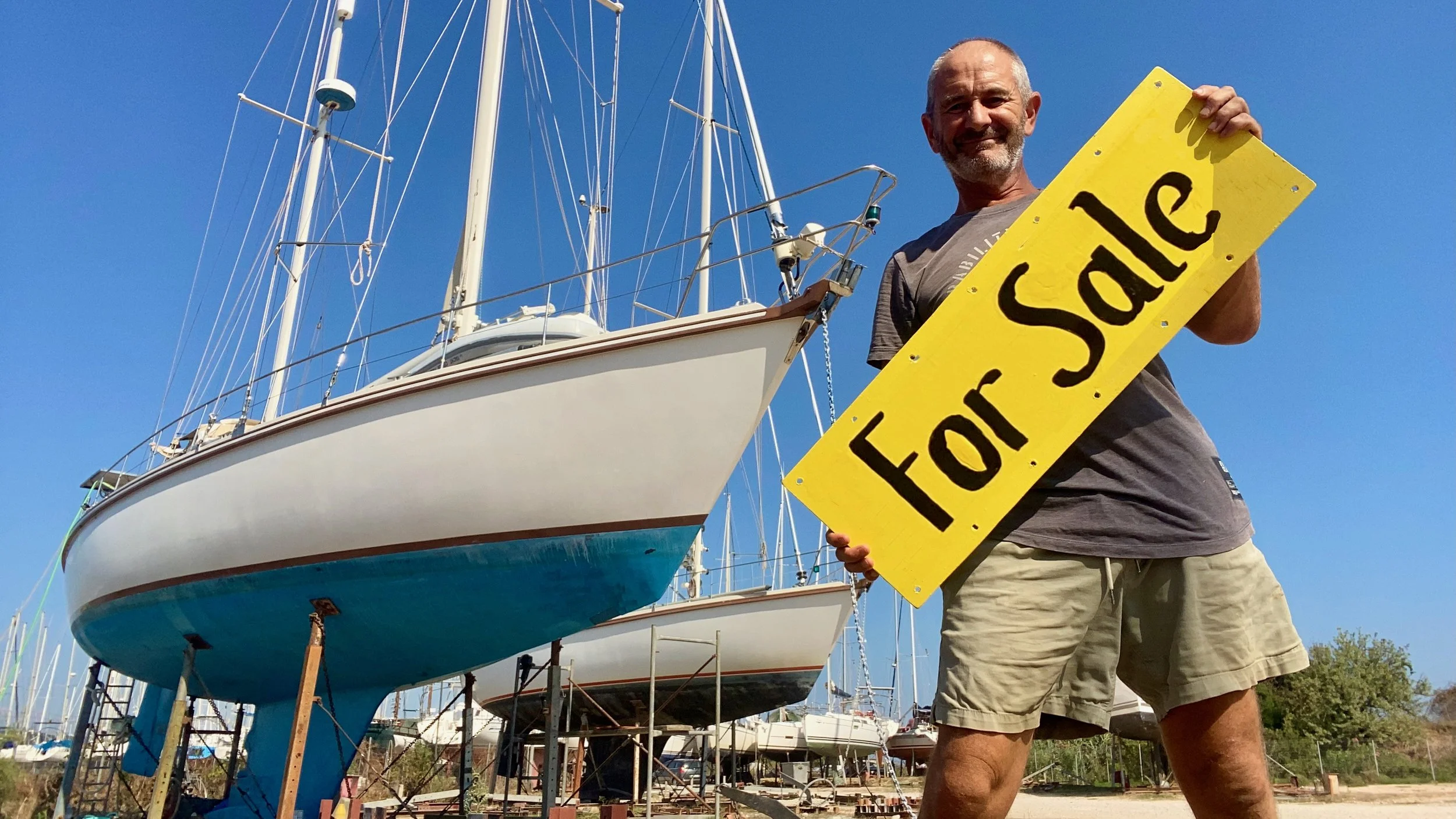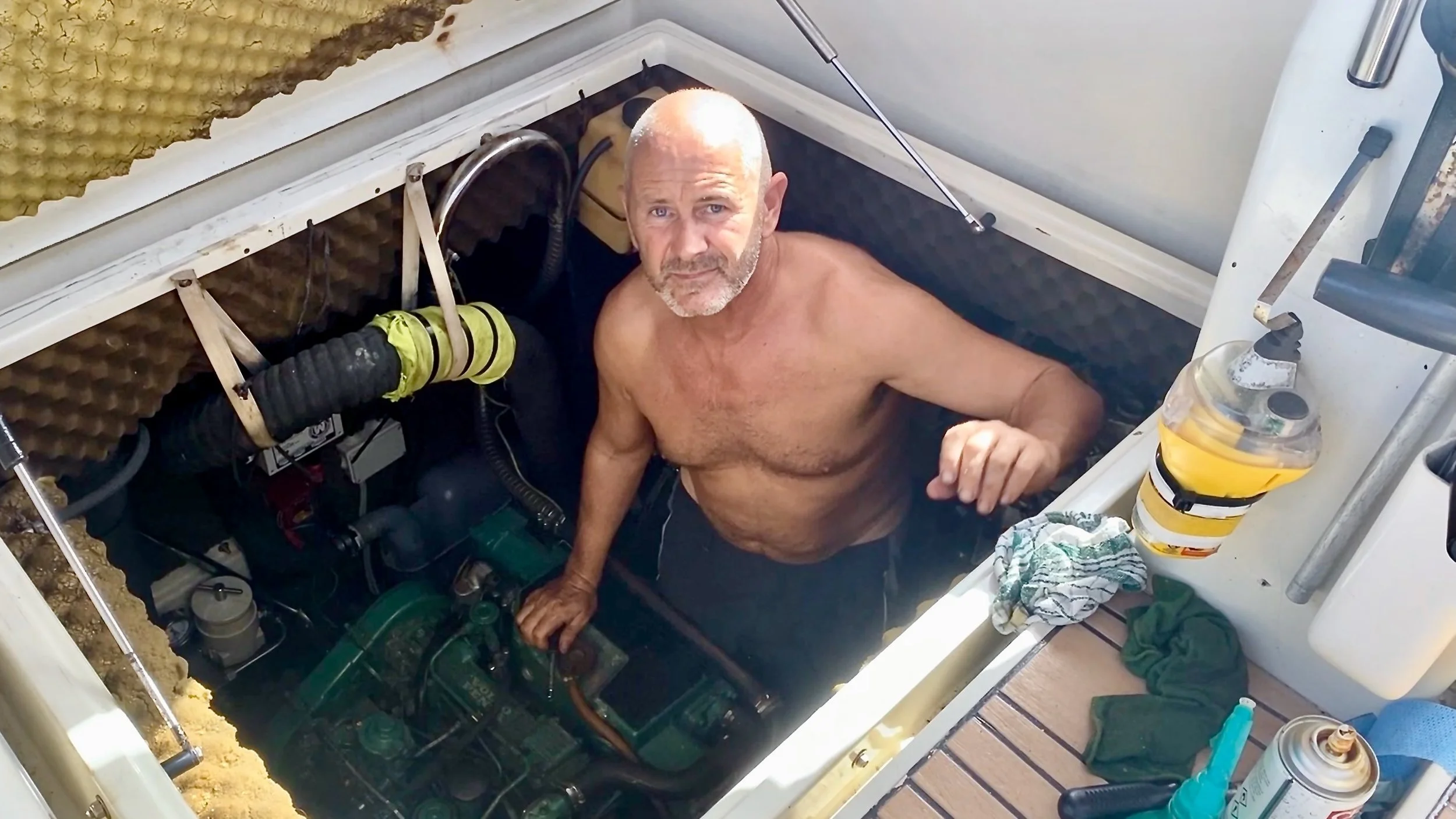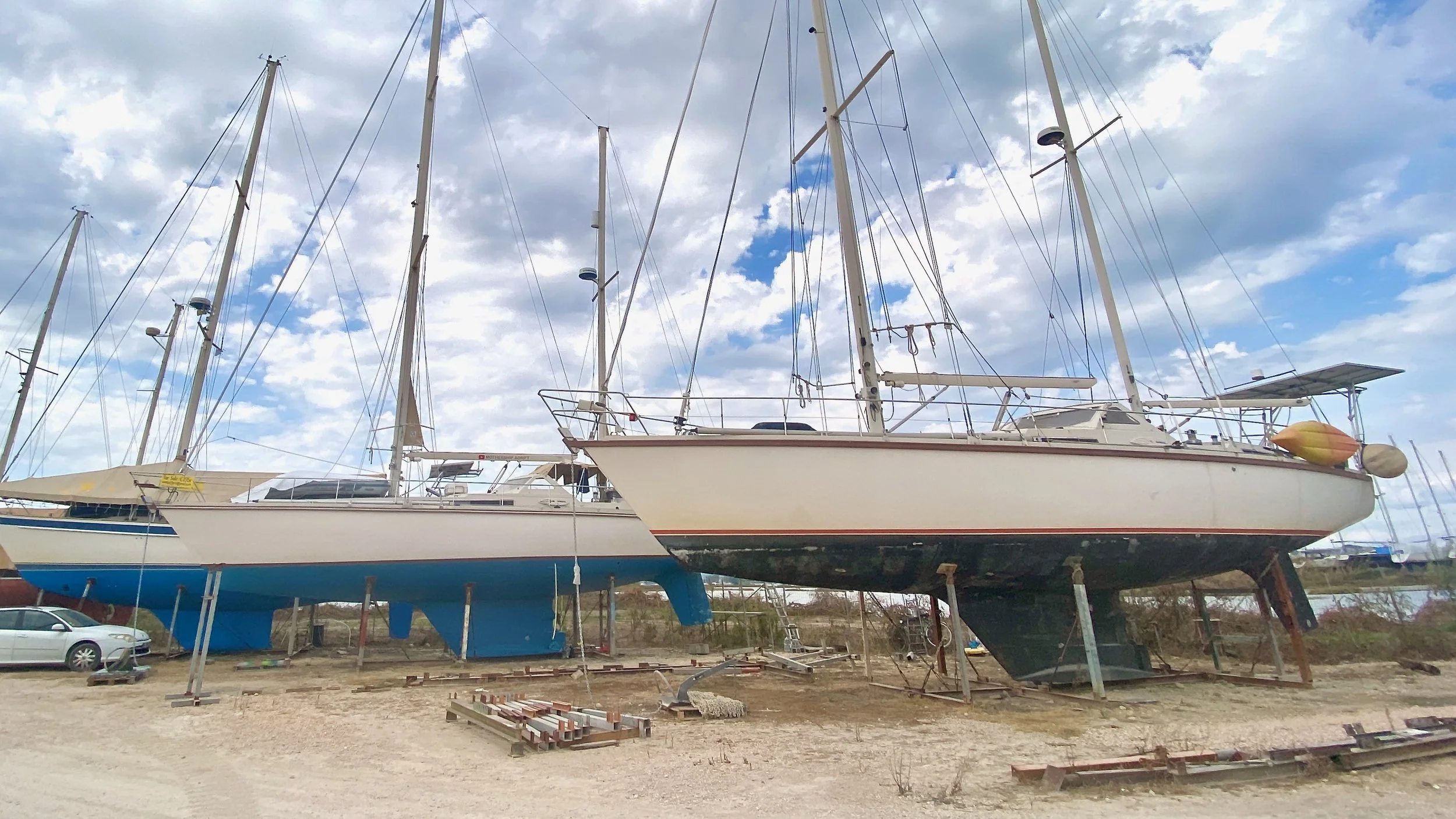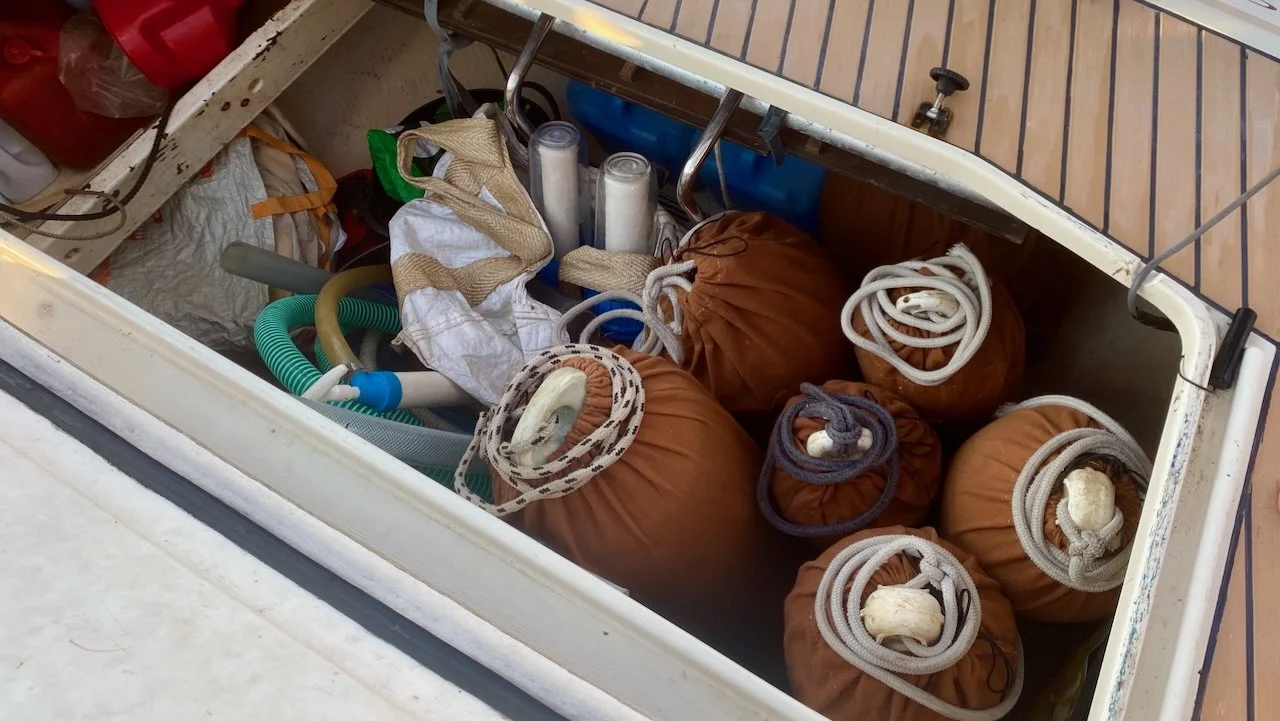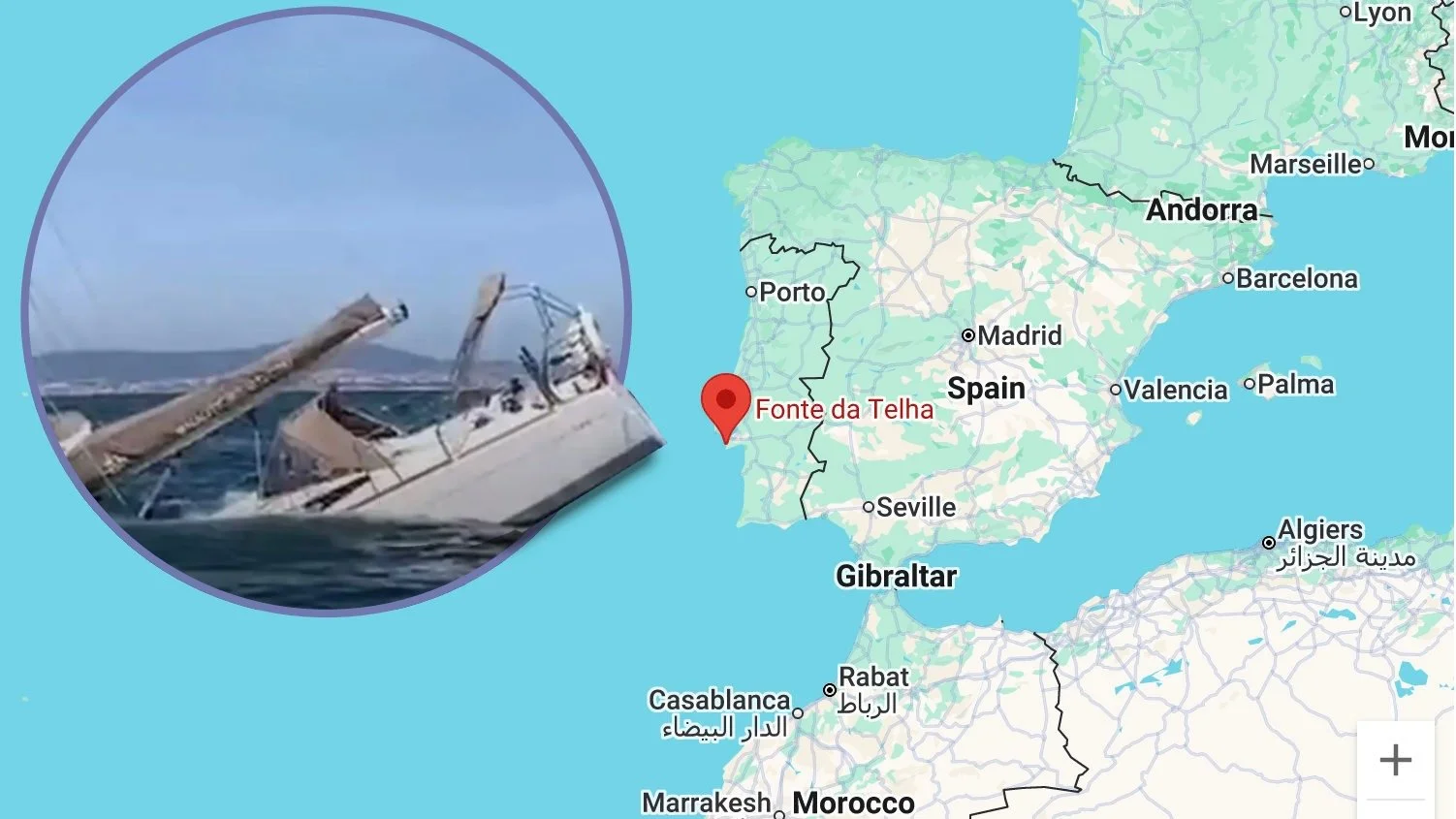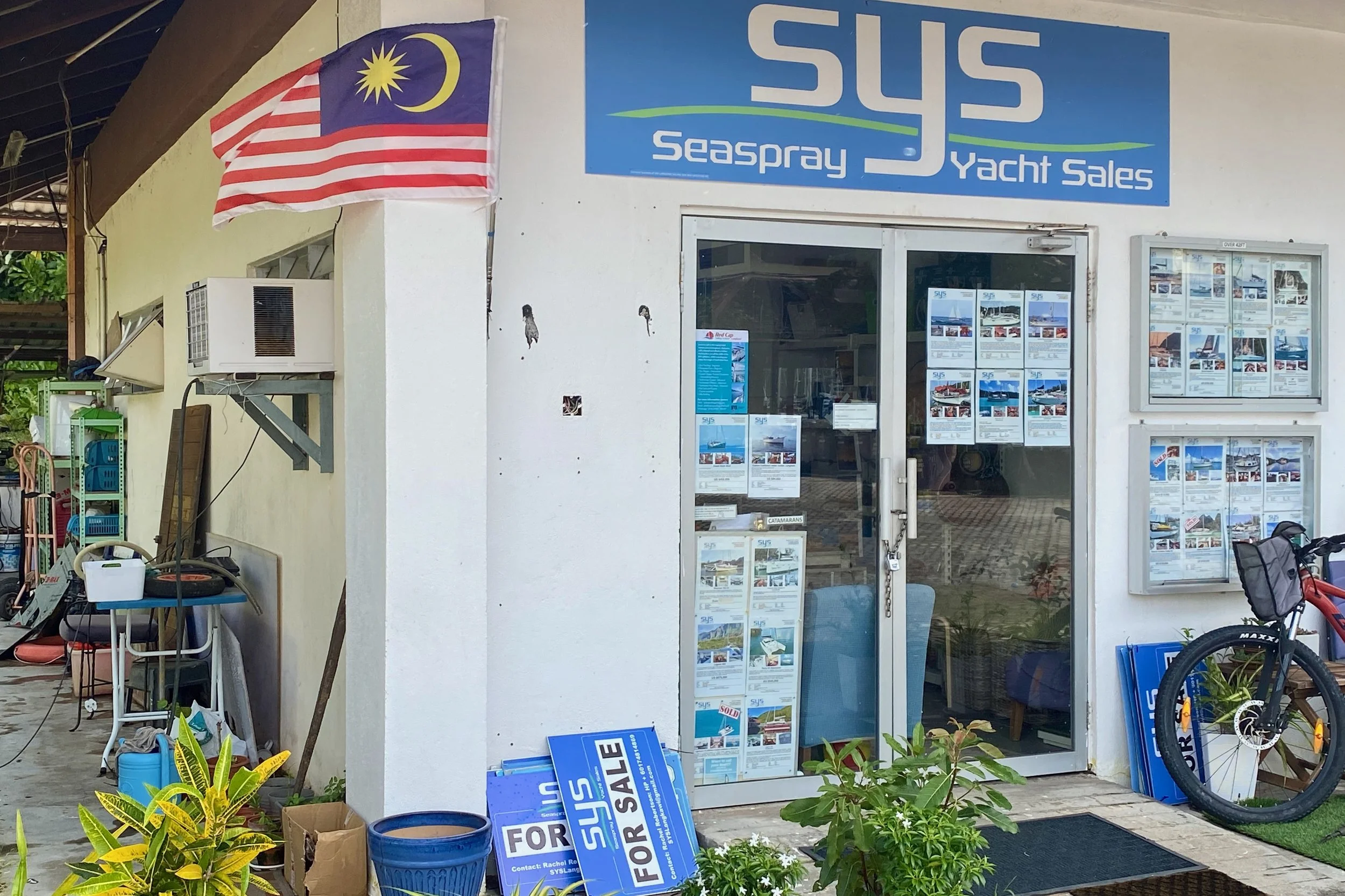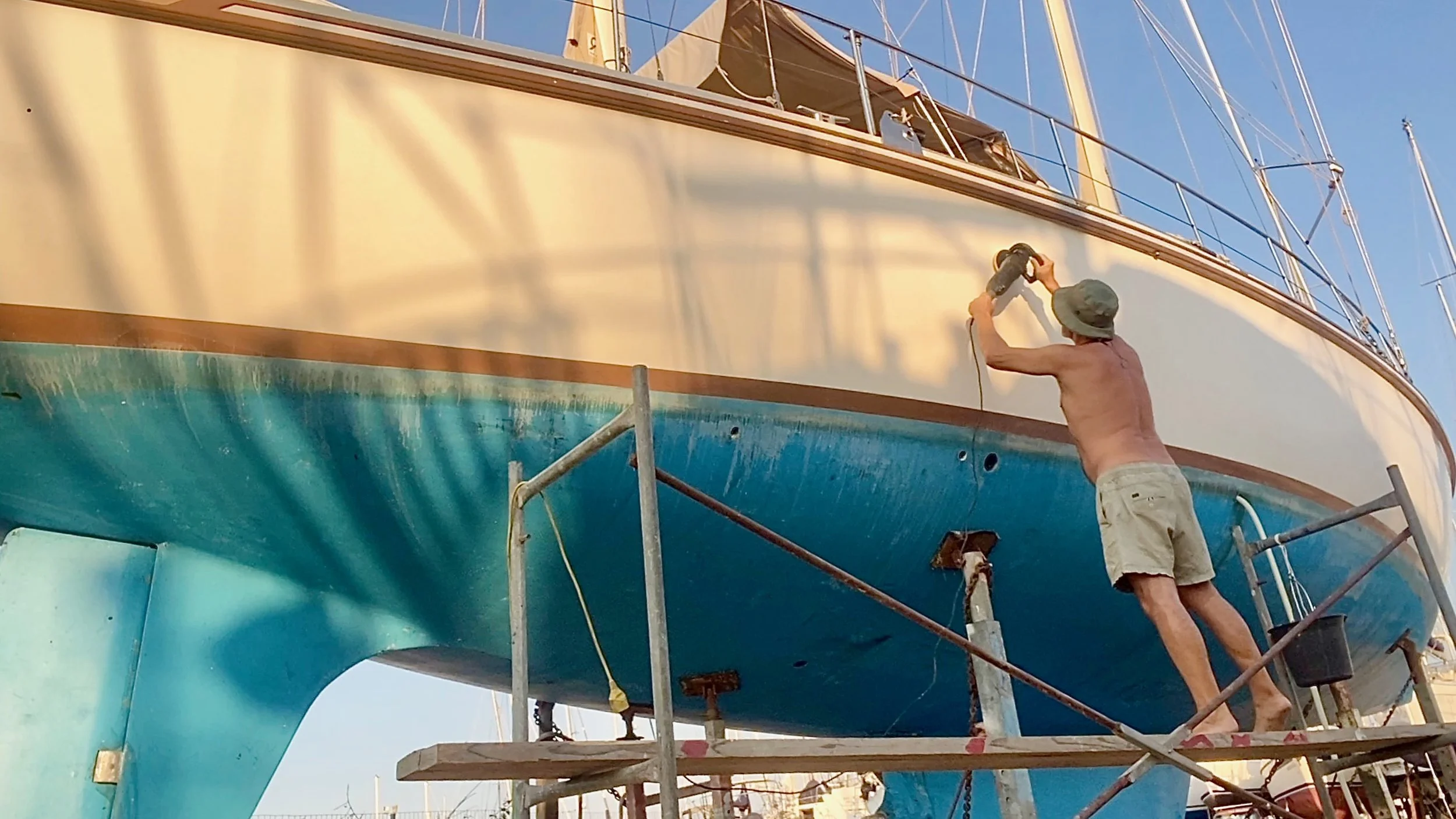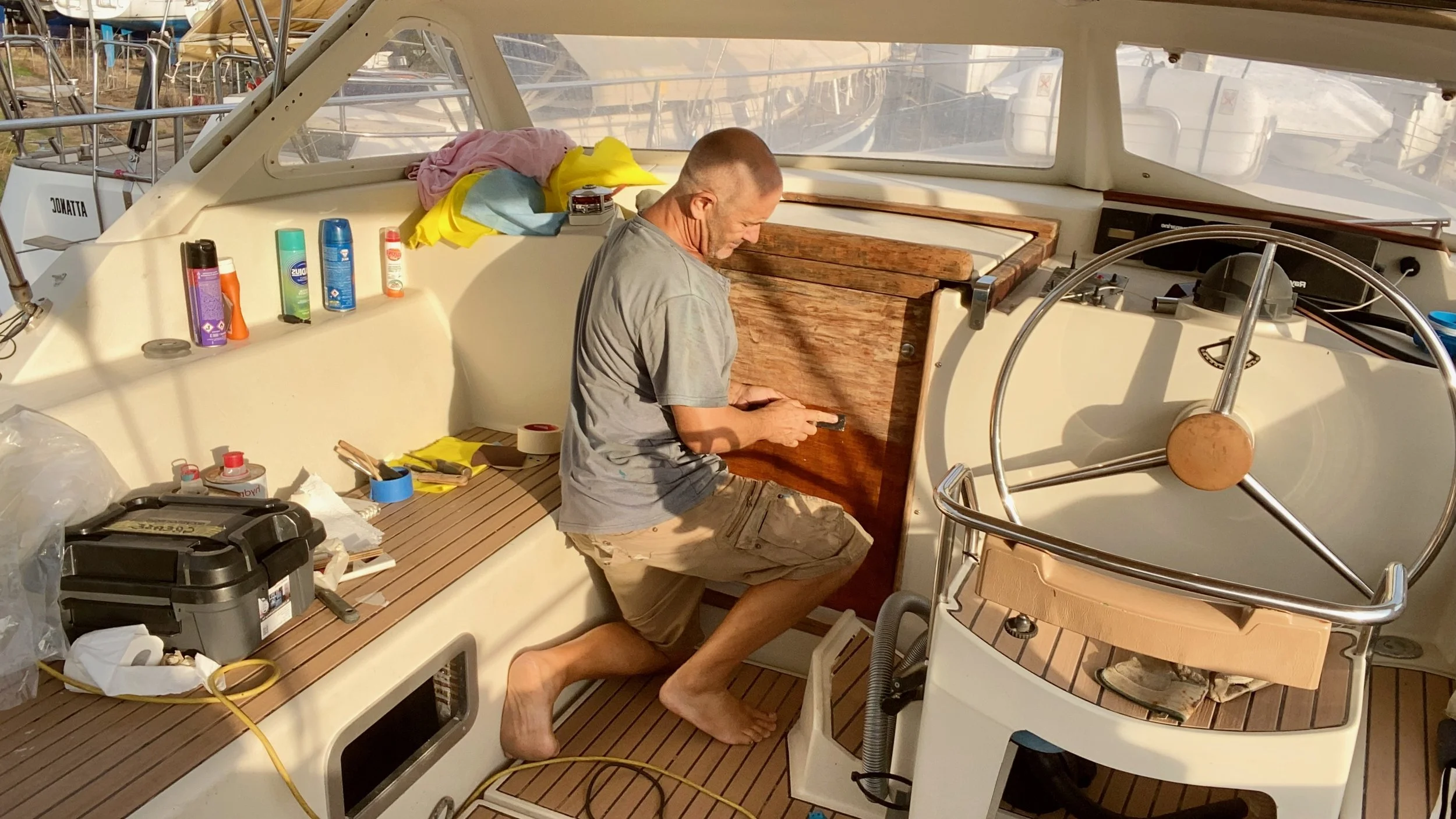Selling your Boat When the Adventure is Over
01-05-02
“I’ve just been on a once-in-a-lifetime adventure. I’ll tell you what, never again ”
The adventure is definitely over when the For Sale sign goes up
The Two-Ends of the Wallet
When we first bought our boat, we had the energy, the enthusiasm, and a relatively fat wallet begging to be emptied. Chandleries and mechanics made a fortune out of us! But we had little of the knowledge or skills to fix her up properly. By the time we’d finally gained the skills, insights, and sea-soaked wisdom to make her truly seaworthy and liveable, the wallet was empty and the will to pick up another spanner for a final round of maintenance seemed like a gargantuan effort.
Stopping in a timely manner isn’t failure. It’s strategy. If the dream has ended, it’s time to wake up and get out. There’s no shame in changing course. Better to sell the boat with good memories (and a boat) still intact than to grind yourself to dust pretending you still love fixing pumps in a sweaty engine bay.
Better to sell the boat with good memories (and a boat) still intact than to grind yourself to dust pretending you still love fixing pumps.
The Tale of Two Amels
When we hauled our Amel for the last time, she ended up stacked alongside another identical Amel. That one looked much as ours had when we first picked her up eight years earlier. Tired, dishevelled, and unloved. Its owner had clearly jumped ship before the hull was even dry and tossed the keys at the local broker. Not even the most basic repairs or facelift had been attempted. A tragic waste, because Amels are strong and dependable bluewater cruisers, and even the laziest scrub-up could have bumped the value and slashed the time it took to sell.
It’s just false economy to skip this stage, because you’ll be handing over your hard-earned cash to the boatyard in storage fees while your neglected pride and joy quietly rots and depreciates even more.
We hauled out beside an identical Amel that looked tired, dishevelled, and unloved
Why Timing Matters
That’s why it’s worth bowing out while you’ve still got something left in the tank. Not only to claw back a fraction of your so-called “investment” (let’s be honest, boat and investment should never appear in the same sentence), but to hand her over with some dignity, goodwill, and the faint satisfaction that the new owner will be in a much better position to start their dream than you were. Remember, you were that innocent, starry-eyed adventurer once, so from a moral standpoint at least, the new owner deserves a half-decent starting point.
The Harsh Reality of Depreciation
But let’s park the emotions for now and talk brass tacks. Because if you’re anything like us, you’ll be broke and desperate for cash to fund whatever comes next. Yes, there was that brief post-Covid bubble when boats were selling faster than loo roll in lockdown, and some owners even made a profit. (I know, sounds like folklore, but I met a few who couldn’t believe their luck!). Don’t get your hopes up though. Unless another lab technician in Wuhan starts flogging pangolins to a local wet market (allegedly), that little miracle isn’t repeating.
So brace for a hit. How big depends on many things, some you can control, most you can’t.
Recite often the boat-seller’s serenity prayer:
“God, grant me the serenity to accept the depreciation I can’t avoid, the courage to fix the things before the surveyor clocks them, and the wisdom to bin the junk before a viewing.”
Brace for a hit. How big depends on many things, some you can control, most you can’t
Because boats depreciate like cars, not houses. Pour in cash, fit every gadget under the sun, and the market won’t so much as twitch. At best, you’ll sneak higher on a buyer’s shortlist. Far smarter to flog the extras on eBay, Craigslist, or the local boat jumble, where someone might actually pay a decent price, then use the cash to slap on fresh anti-foul, replace the anodes, and polish the topsides. Stuff that actually does sell boats.
And if anything onboard is broken, outdated, or ugly, get rid of it. Leaving it there is like gift-wrapping a discount card for your buyer.
We bought our boat with every last bit of “extra equipment” thrown in. Which in reality was a mountain of obsolete junk: a paper Navtex, a weather fax, pumps that didn’t work, and enough mismatched alternator belts to start a rubber museum. It was a pain to sort through it all. That didn’t stop the seller phoning me weeks after the sale requesting extra money for a forgotten paddle-board he’d left buried in the lazarette.
Flog extras where someone might actually pay a decent price, then spend the cash on stuff that actually sells boats
I politely offered to dig it out and courier it back to him, at his expense. He refused. Within a year the adhesive failed anyway (as they always do on paddle-boards) and it was off to landfill. Never underestimate the brass neck of some people in the boat-selling racket.
Location, Location, Location
Even with everything polished and shipshape, a boat is much easier to flog when it’s in the right place. Location and currency can make the difference between shaking hands with a buyer over a pint, or watching your pride and joy rot on the hard.
There are certain hotspots where boats enthusiastically change hands. They’re usually at the end of a long slog, just before a daunting passage, or where turning back is near impossible. Gibraltar and La Línea are classics. Boats limp in after the Bay of Biscay, the crew’s hair swept horizontal by North Atlantic storms, orcas chewing at their rudders, and suddenly this cruising malarkey seems a bit much.
As many as 7 boats have been sunk and over 250 damaged by Orca attacks of the west coast of Spain and Portual in the last 5 years
The Canary Islands are similar. In the winter months a cohort of boats head south from Europe down the West African coast, a challenging sail by anyone’s standards. As they point their bows into the vastness of the Atlantic, some just decide, “Nope,” and the boat goes on the market.
Mexico’s Cabo San Lucas catches Baja Ha-Ha ralliers who decide a cold beer and flight home is preferable to the long passages west or back the way they came against headwinds.
New Zealand’s Opua and Auckland are graveyards of big plans, especially after the tough passage from Fiji. Darwin and Cairns in Australia also collect boats from those who’ve just discovered the Indian Ocean is a very big, very empty place, and Indonesia to the north is either a cruiser’s paradise or a plastic-polluted gauntlet of suicidal fishing boats and a bureaucratic nightmare, depending on who you ask.
Then there’s Panama. Balboa on one side, Shelter Bay on the other. Both stacked with sailors staring at canal fees, Pacific swells, or Caribbean squalls, and again thinking, “Nope.”
The Caribbean itself is no stranger to this either; Antigua and Grenada are full of people who’ve had their fill of rum punches and mosquito bites. And in Southeast Asia, duty-free Langkawi is the final pit stop before choosing between the Cape of Good Hope (nightmarish gales) or the Red Sea (pirates, headwinds, bureaucracy).
Duty-free Langkawi is the final pit stop before before the daunting decision - heading to the Cape of Good Hope, the Red Sea
Every one of these places has the same vibe: people staring at the horizon, then at themselves, and deciding to call it a day. Which is exactly why they’re magnets for buyers hunting bargains. Great if you’re shopping. Not so great if you’re selling. Buyers know you’re desperate. Brokers know it. Even the bar staff know it. You’ll be haggled to death and offered insultingly low figures because there are ten other boats with the same sad story tied up next to yours.
Where and When to Sell
Yes, you can sell at the these stops if you don’t mind taking a hit on the price. But if you want real money, plan ahead and go to the buyers’ backyards, not where the weary call it a day.
Time it right, and let the market work for you. Northern Europe in spring and summer is prime hunting ground. The UK, France, Holland, Germany, even the Nordics, because people are full of big holiday plans and open wallets. The Med works too if you catch it in May or September at the bookends of the sailing season.
Currency obviously helps. A strong pound pulls in Brits, a strong euro tempts Continentals, and a strong dollar brings American bargain hunters. Spring is great, autumn can work if you’re aiming at buyers who want to refit over winter. But mid-winter? Forget it.
To Broker or Not to Broker?
If you don’t plan ahead, or need to dash home in a hurry, chances are you’ll end up calling a broker. And right there you’re looking at a 10–20% haircut in commission and fees. On top of that, the boat will need to be parked somewhere handy for viewings, usually a marina or yard within spitting distance of the broker’s office. Add in the cost of detailing services or management companies to keep the place aired and vaguely civilised (because boats deteriorate fast once you stop caring for them), and the bill climbs rapidly.
The question is whether you can spare a few more months, and a bit of elbow grease, to sort it all out yourself. Online brokerage platforms, private listing sites, even Facebook Marketplace are all viable options these days. Yes, it means more legwork. But weigh that against coughing up tens of thousands in commission for the privilege of someone else answering the phone.
Try to put a few more weeks aside, and a bit of elbow grease in to sort it all out yourself.
Negotiations
The better your boat looks, and the more patient you are, the stronger your position when the haggling starts. But patience only stretches so far. Be flexible. Don’t be like the owner I mentioned earlier in How to Buy a Boat who refused to budge a measly 10% to meet our budget. He stood firm, proud as a rock, and three years later was still paying marina fees, insurance, and maintenance costs that would have dwarfed the discount we tried to negotiate. That’s not clever. That’s stubbornly setting fire to your own wallet.
Tempestuous Lovers
Selling a boat is a lot like ending a tempestuous relationship. She’s carried you through squalls and sunsets, breakdowns and breakthroughs, and left you knackered and stories no one will ever quite believe. Drag it out, and it becomes messy, bitter, and ruinously expensive. Get it over with cleanly and you both walk away with dignity (and maybe even a little fondness for the good times) and the freedom to point your bow (and your life) towards the next big adventure!
The Practical Checklist
So, you’ve decided to sell. Here’s the brutal, step-by-step reality of making your boat irresistible to buyers:
Take peeling varnish back to wood or redo it.
Kill the Garden Bench Look
Peeling varnish is like turning up to a date in ripped trackies. No one cares how charming you are if you look like you stopped trying years ago. Take it back to wood or redo it.‘Fake’ It Below the Waterline
A freshly painted bottom whispers “I still care.” A crusty, barnacle-ridden hull screams “project.” New anti-foul and anodes aren’t a waste of money.Cleanliness Sells Competence
Shiny stainless, polished winches, clean bilges, oil-free engines. Diesel, damp, or dodgy pipes will kill the romance. If it stinks, fix it. Nobody is going to buy into a dream with hygiene issues.Blank Canvas, Sell the Dream
Ditch your deck shoes, cracked mugs, and Spam stash. Lockers should look empty, not desperate. Then take bright, magazine-quality photos that sell the dream, not your clutter.Shine a Light on Me
A warm, bright cabin feels like a cosy date in a wine bar. Switch on the mood lights, warm it up, and make it inviting. Buyers should picture sundowners, not survival bags.Get Your Own Survey
Costly, yes. But a clean survey builds trust, kills paranoia, and lets you fix nasties before they become bargaining chips. Confidence sells.Location, Season and Currency
Graveyard marinas (Gibraltar, Panama, Langkawi) are hard for buyers to get to, and they’ll drive a hard bargain if they do. Move to buyer hotspots: Northern Europe in spring, Med at season’s edges. Watch currency too. A strong pound, weak euro, strong dollar, and ride the wave.Think Before You Call a Broker
Convenient, sure, but brokers will hoover up 10–20% in fees and insist the boat sits within spitting distance of their office, polished and detailed at your expense. If you’ve got the time and patience, list it yourself. Private listings and online platforms work great.Negotiation Isn’t War
Presentation and patience get you a better price, but don’t be so rigid you strangle the deal. A little flexibility now saves years of costly marina fees, insurance, and maintenance. Better to walk away with a decent deal than cling on until you’ve bankrupted yourself out of sheer bloody-mindedness.
If you want more straight-talking tales from life afloat, and information about selling you boat when the adventure is over, then you’ll love our upcoming book. We're inviting early readers to join the pre-launch crew and get behind-the-scenes access as we wrestle it into shape. It’s honest, unfiltered, and occasionally useful. Sign up here to get involved, give feedback, and be part of something that’ll either be a bestseller or a brilliant cautionary tale.

